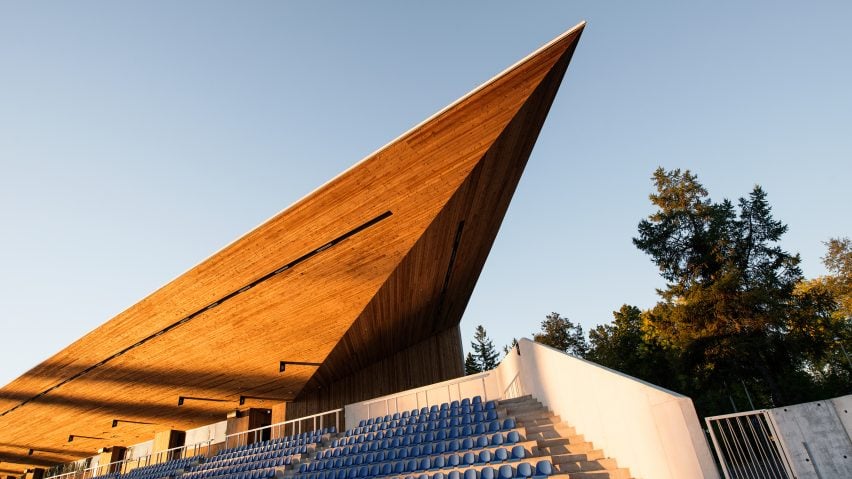
Wooden spike shelters grandstand at Estonian stadium by KAMP Arhitektid
The sharply angled roof, walls and steps at either end of this stadium in the Estonian city of Pärnu direct spectators up and into the main grandstand.
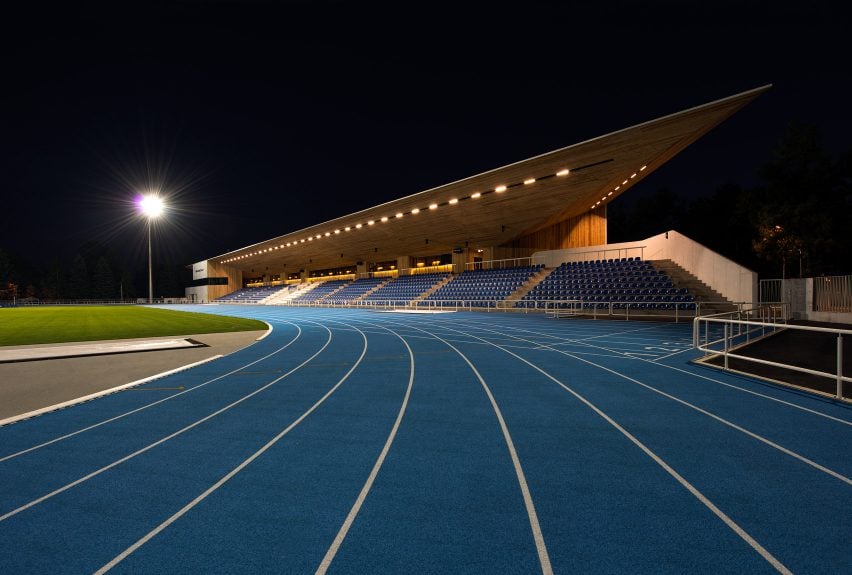
The Pärnu Seaside Stadium was designed by Tallinn studio KAMP Arhitektid to replace an existing grandstand on a site close to the city's beach.
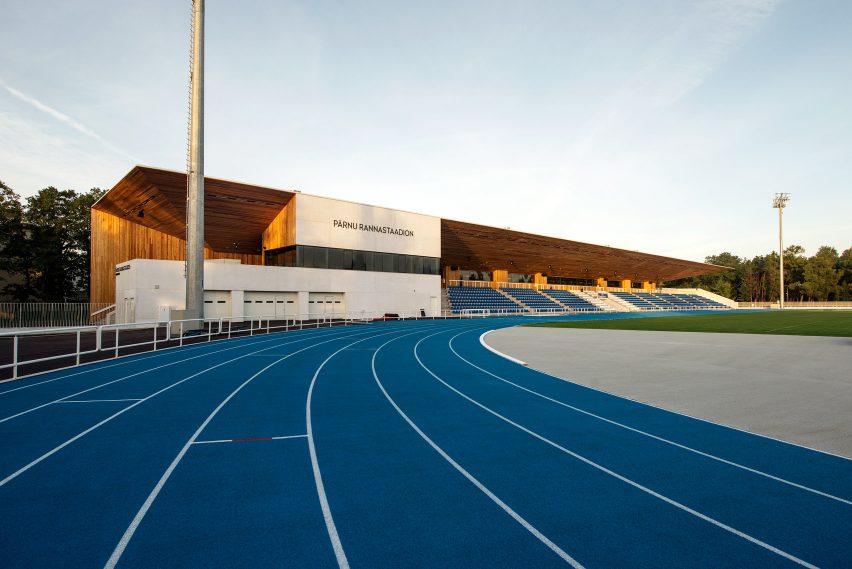
This is the third iteration of a stadium on the site. The first stadium built in 1933 was exemplary of Estonian functionalist architecture, and executed largely in timber by architect O Siinmaa and engineer N Leyden.
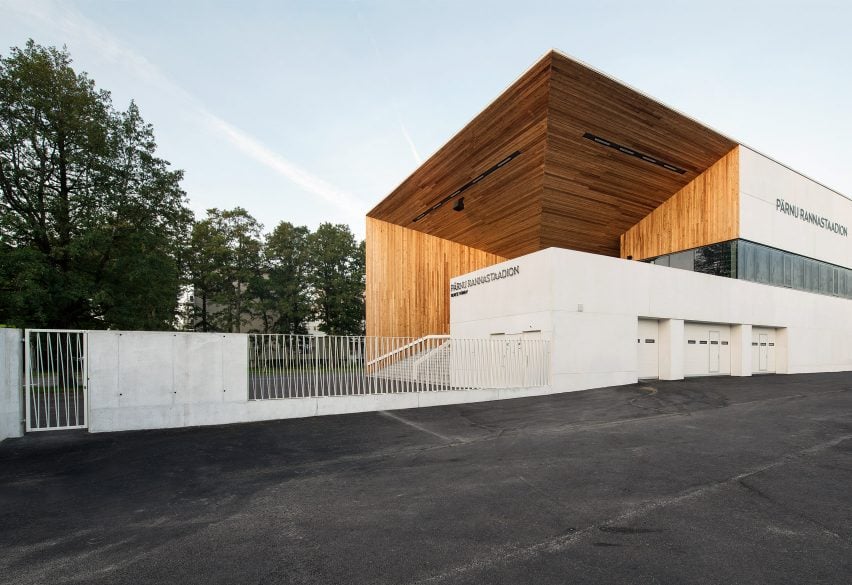
The original wooden stand was demolished in 1981 and replaced by a concrete and wood structure designed by A Pähna, which also gradually deteriorated and was removed in 2015.
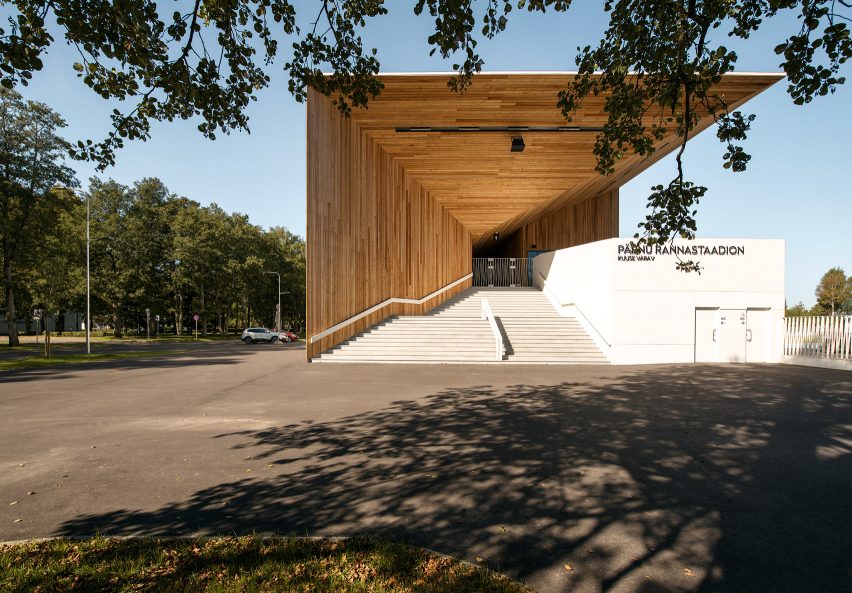
According to KAMP Arhitektid, the new stadium's design is informed by the modern aesthetic of the original grandstand, which is referenced in the timber facade elements and the soaring wooden roof.
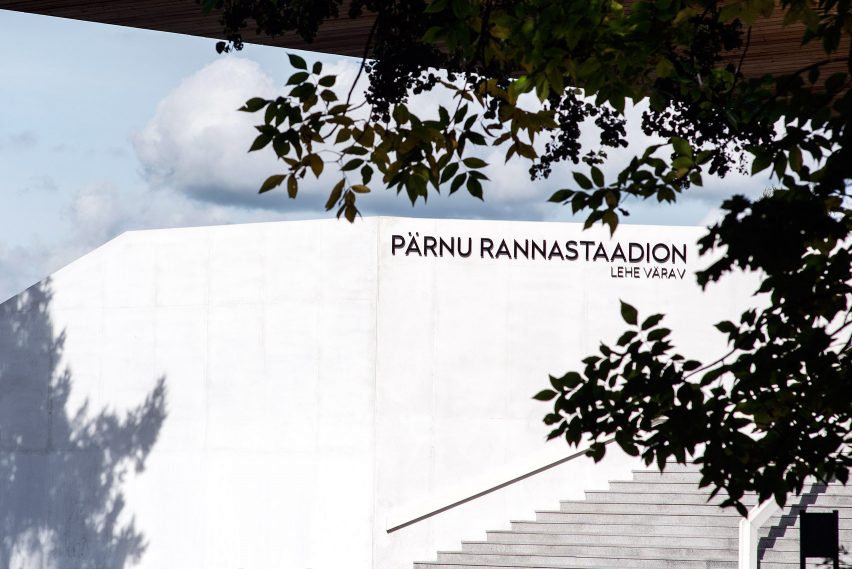
The stadium's white concrete facades also evoke the Functionalist design of the nearby Rannahotell, which was completed in 1937.
The building extends along a tree-lined street, creating an elongated plan that flanks the running track and sports pitch on the other side.
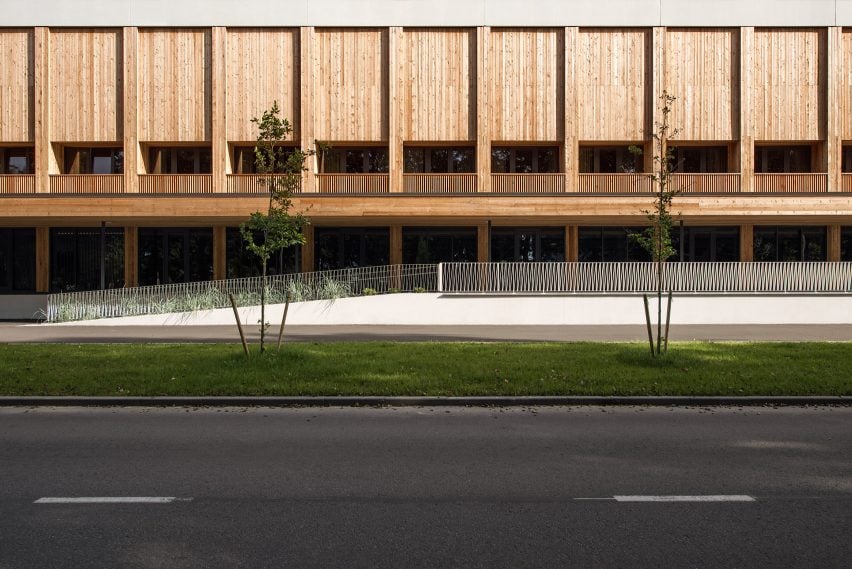
"The proportion of the slender, almost 1:10 plan is passed on to the entire form of the building, which is airy, sharp and brisk," said the studio.
At either end of the stadium, wide stairways ascending from the street channel spectators up into the 1,500-seat grandstand, where administrative rooms and press facilities are also accommodated.
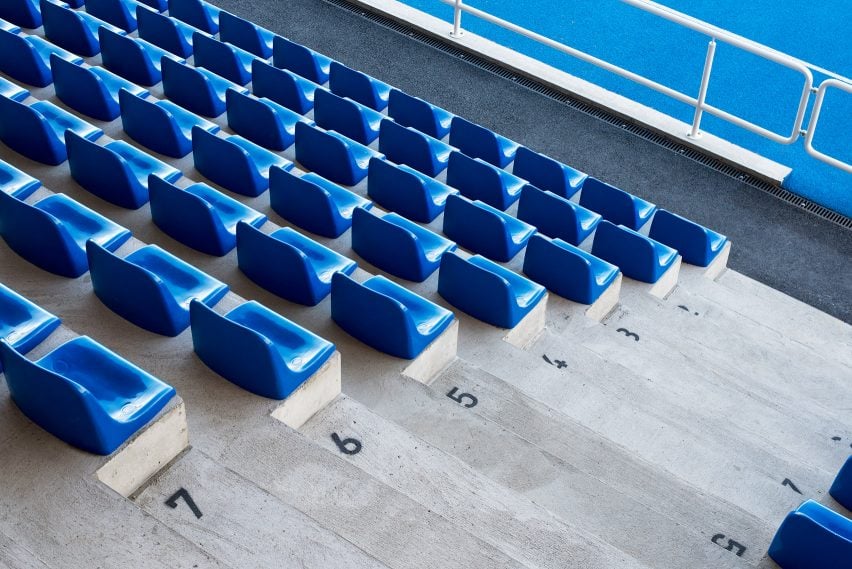
"Visually, the cantilevered awnings above the flights of stairs form large-scale funnels which attract people to look inside," said the architects.
The seats are sheltered beneath the timber roof, which features unsupported spans of as much as 28 metres. Angled surfaces accentuate the structure's lightweight and dynamic expression.
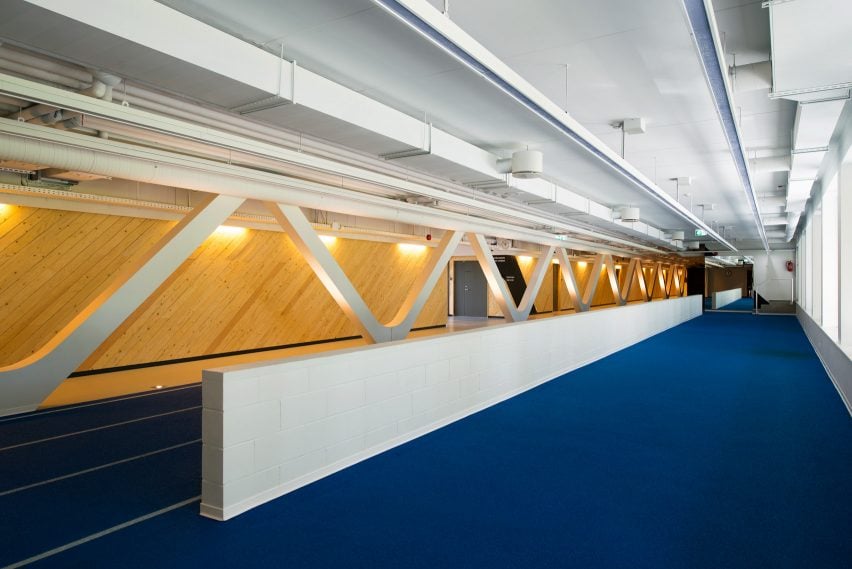
The building's ground floor contains dressing rooms and showers for the athletes, along with coaching rooms and an indoor sprint track. A larger block at one end provides additional space for equipment, storage and a commercial area.
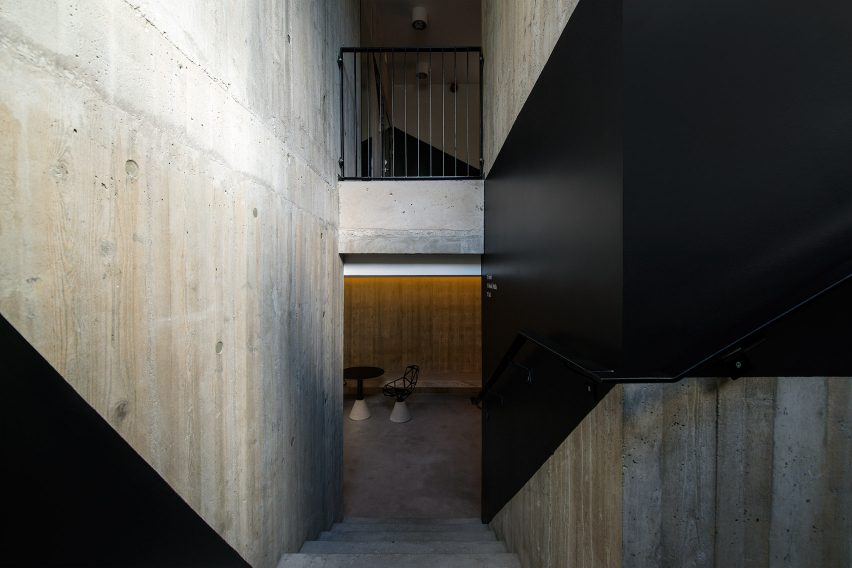
Athletes and spectators are kept separate throughout the building by the zoning of the different spaces. Accommodation for the athletes is provided on the first floor, where a row of balconies incorporated into the timber facade looks out towards the sea.
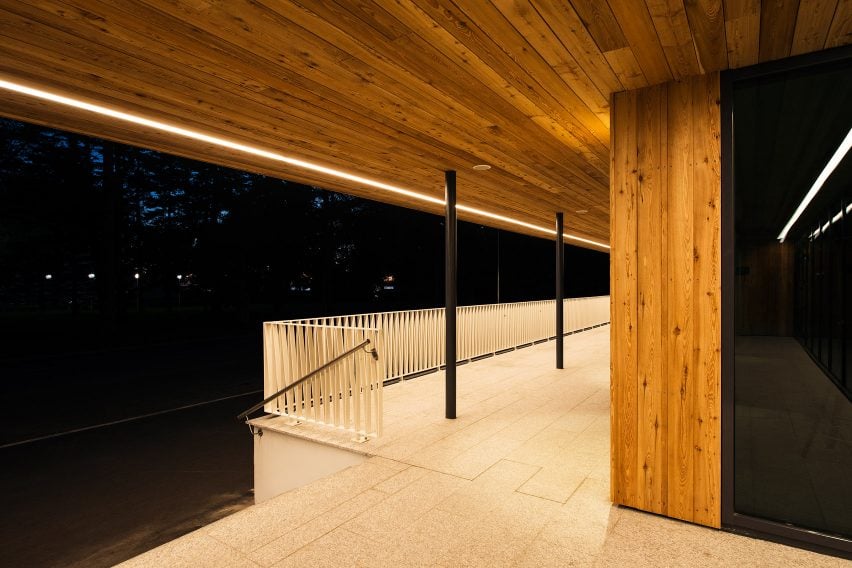
The interior combines painted blockwork and exposed services on the ceiling with diagonal wooden cladding and painted signage elements that mirror the angles of supporting trusses.
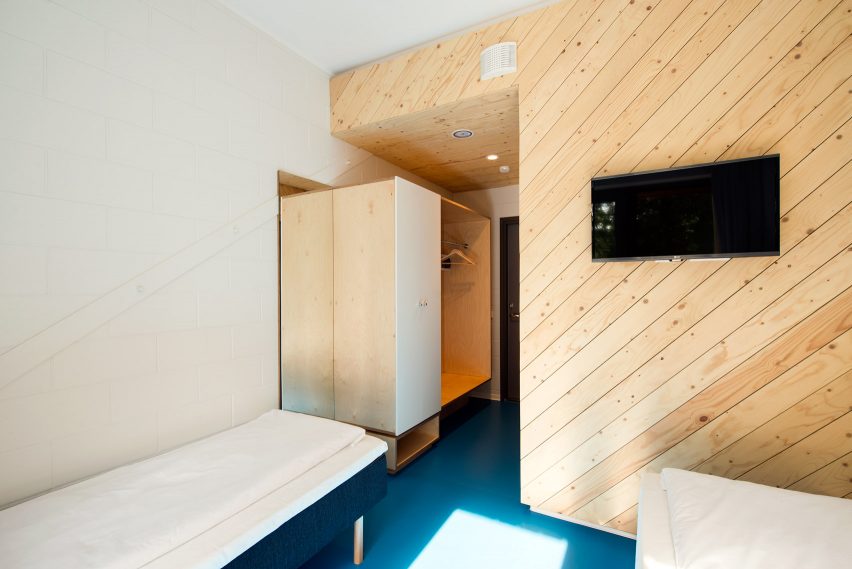
Exposed concrete and a minimal colour palette of predominantly black and white is offset by the blue flooring of the running track and the athletes' bedrooms.
Wood features prominently in several of KAMP Arhitektid's projects, including wooden house near Tallinn that is cranked around an old oak tree, and office filled with timber-clad meeting rooms and living trees.